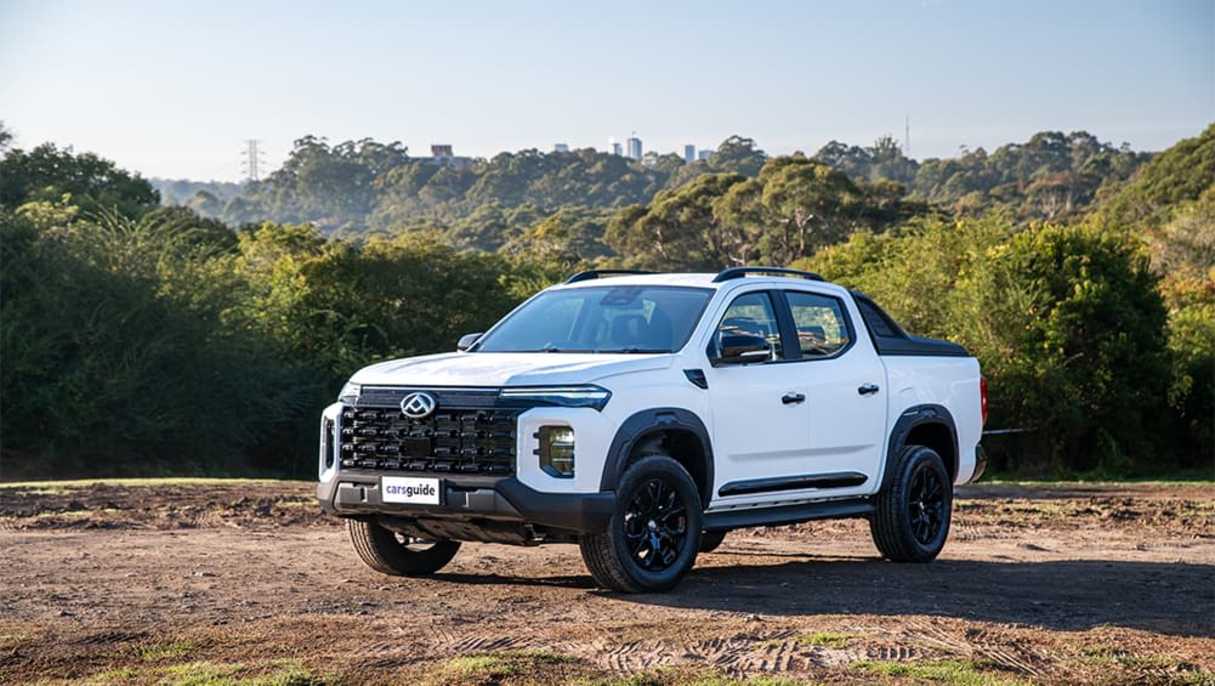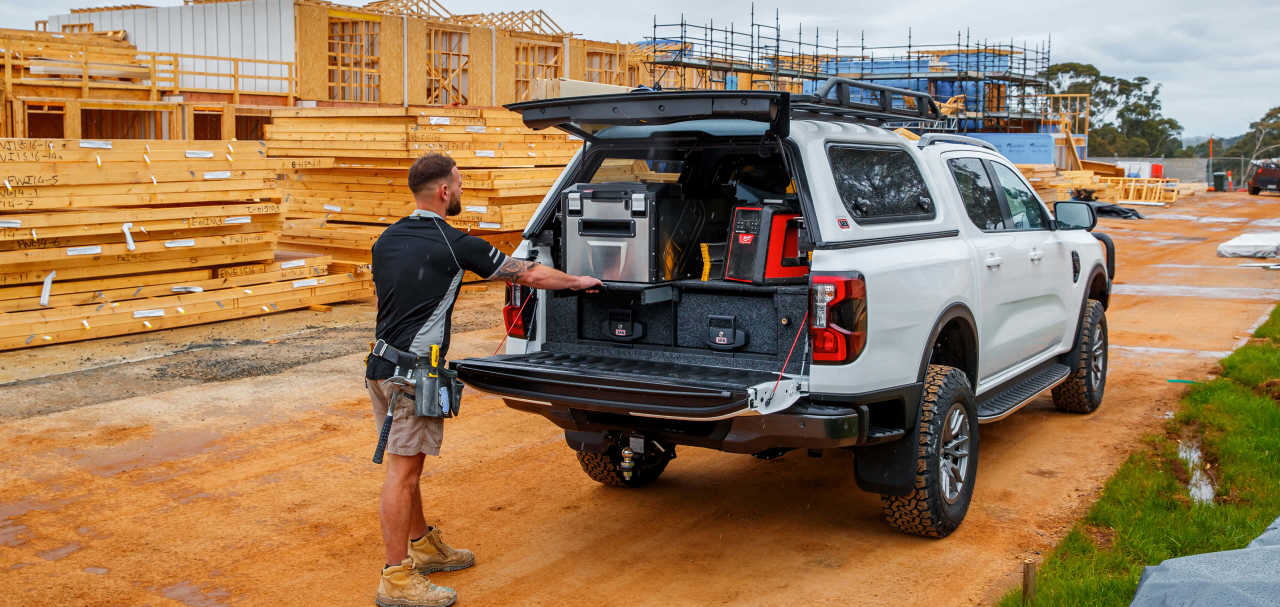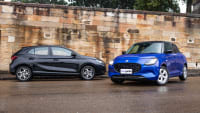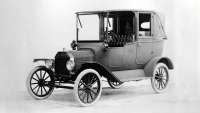Chinese utes have been making substantial in-roads into the Australian market over recent years.
The field already includes BYD, GWM, JAC, and LDV and utes from Foton and MG are tipped to arrive here in the not-too-distant future.
At time of writing, Chery’s upcoming ute Himla diesel-hybrid was on display at Auto Shanghai, the world’s largest motor show, and some details about Chinese auto giant Changan’s Deepal E07, an electric SUV with a ute rear, were coming to hand, including its pricing: a guesstimated $65,000 or so (excluding on-road costs) for the RWD version; and approximately $75,000 (excluding on-road costs) for the top-shelf dual-motor AWD version.
Chinese ute brands can no longer be ignored. Standard features, build quality, onboard tech and more in Chinese-built vehicles has markedly improved in the past few years so they can’t be regarded as mere novelties not worthy of consideration.
The fact that they are cheap alternatives to big-name utes is another major part of their appeal.
Here are some of the current crop of Chinese utes in Australia.
BYD Shark 6
There has been plenty of interest in this ute and for good reasons.
The Shark is BYD’s first ute and it’s the first plug-in hybrid ute in Australia and there has been some debate as to whether this might just be the best Chinese ute on the market here.
It’s big, roomy inside, stacked with standard features and is reportedly nice to drive on-road.

This all-wheel-drive ute has a 1.5-litre, four-cylinder, turbo-petrol engine and two separate electric motors on each axle that draw power from the engine and a 30kWh battery.
Peak combined output of the electric motors is claimed to be 321kW and 650Nm.
The Shark 6 has official combined cycle (urban/extra-urban) fuel-consumption figure of 2.0L/100km and a New European Driving Cycle (NEDC) electric-only driving range of 100km. Its electric-and-petrol driving range is a claimed 800km.
The good: It’s larger than some other dual-cab utes and its standard features list is impressive. The cabin is roomy and comfortable.
The bad: The Shark is apparently not very effective as an off-roader – but I’ll be the judge of that in an upcoming test. It has a below-standard 790kg payload rating and 2500kg braked towing capacity.
Price: $57,900 (excluding on-road costs).
GWM Cannon XSR
The Cannon has established a foothold in the Australian market as a reasonably well-built and -priced ute all-rounder.
The Chinese-made ute strikes a solid balance between style and substance and offers plenty of standard features.
Up until recently it has only been on sale here as a dual-cab but it is now available in Australia as a single-cab chassis (4x2, 120kW/400Nm 2.0-litre, four-cylinder, turbo-diesel engine and eight-speed automatic transmission) in entry-level Premium grade (from $35,490, drive-away).
The other Cannon Premium is a 4x4 dual-cab ute for $39,490.
.jpg)
The Cannon dual cabs have a 2.4-litre, four-cylinder, turbo-diesel engine (135kW/480Nm) and a nine-speed automatic transmission
Your options, all 4WDs, are the Cannon Lux dual cab ute ($41,490), the Cannon Lux dual cab chassis ($42,490), the Cannon Ultra dual cab ute ($44,490), the Cannon Vanta dual cab ute ($46,490) and the Cannon XSR dual cab ute ($50,990).
The single-cab chassis ute has a 1150kg maximum payload and a 3200kg towing capacity.
For reference, the top-spec dual-cab and pick of the bunch, Cannon XSR, has a 875kg maximum payload and a 3500kg towing capacity.
The good: All 4WD variants have a rear diff lock.
The bad: Driver-assist tech can be too intrusive and jarring.
JAC T9
The JAC T9 has arrived on the Australian ute-buying scene as a solidly low-key but value-packed opportunity for those looking to get a good quality ute for fewer precious bucks.
There are only two JAC T9 variants, both dual cab 4WDs: the entry-level Oasis ($46,329, drive-away) and the top-spec Haven ($49,390, drive-away).
For this yarn we’ll focus on the Haven.
It has a 2.0-litre, four-cylinder, turbo-diesel engine (producing 120kW/410Nm), an eight-speed automatic transmission and a rather substantial standard features list.

JAC calls the T9 the safest ute in Australia, courtesy of ANCAP, and with a descriptor like that you’d expect this ute’s safety suite to be comprehensive and, of course, it is.
Fuel consumption is listed as 7.6L/100km (combined).
For reference, the T9 Haven has a 1045kg maximum payload and a 3200kg towing capacity.
The good: It has a premium interior, a tub big enough to fit an Aussie pallet and, as mentioned, plenty of standard features for the price.
The bad: It’s underdone in terms of power and torque for this segment. The driver-assist tech is intrusive and jarring – but in JAC’s defence this is an issue in a lot of new vehicles.
And at time of writing, two new dual-cab JAC utes had been unveiled: the plug-in hybrid Hunter and the electric JAC T9 EV.
The Hunter uses a 2.0-litre turbocharged petrol engine and dual electric motor set-up to produce a combined 385kW and 1000Nm.
The Hunter is tipped to have an electric-only driving range of more than 100km (courtesy of a lithium iron phosphate battery pack) and a total driving range of 1000km plus.
It will have a one-tonne payload and 3500kg towing capacity.
Pricing is expected to be under $60,000.
The JAC T9 EV has 220kW/516Nm electric outputs, a claimed driving range of 330km, and it's capable of AC and DC charging.
LDV T60 Max Plus
The LDV T60 has been around for a few years in a variety of variants – Trailrider, Trailrider 2, Lux, Mega Tub – and has offered a cheaper alternative to the ever popular but ever more costly Ford Ranger and Toyota HiLux.
We won’t even bother discussing the LDV eT60, Australia’s first fully electric ute (130kW/310Nm), because with a price-tag upwards of $93,000 it’s just too expensive. For this yarn we’re looking at the latest variant on offer: the Max Plus.
The diesel-only T60 Max Plus, the top-spec LDV variant, continues the company’s push to make utes that are a successful balance of work truck and a comfortable, functional family all-rounder.

As standard, it has a 2.0-litre, four-cylinder, twin-turbo diesel engine (160kW/500Nm) and either a six-speed manual gearbox or an eight-speed automatic transmission.
It also has a refreshed interior, a re-worked suspension set-up and extra safety tech onboard.
Fuel consumption is listed as 9.3L/100km for the manual and 8.9L/100km for the automatic.
Price (drive-away): $48,411 for the manual; $50,516 for the auto; the Mega Tub version is $52,092.
The good: This LDV T60 offers plenty of value (the cost is a big part of its ongoing appeal), more than adequate torque, and improved driver-assist tech.
The bad: It doesn’t offer as nice a driving experience as some of its rivals, even those it is close to in price.






.jpg)
.jpg)

.jpg)


.jpg)

.jpg)


.jpg)
.jpg)




.jpg)